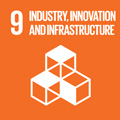- Docente: Fabrizio Lillo
- Credits: 6
- SSD: SECS-S/06
- Language: English
- Teaching Mode: In-person learning (entirely or partially)
- Campus: Bologna
- Corso: Second cycle degree programme (LM) in Quantitative Finance (cod. 8854)
Learning outcomes
The course concerns the trading mechanisms in financial markets: the main challenges, the economic principles, and the statistical models for analyzing the data they generate, exploring in detail the modeling of high frequency financial data. At the end of the course the student will understand the structure of modern financial markets, the conceptual basics of trading, and will be able to use the economic and econometric models in the high frequency domain.
Course contents
Programma/Contenuti
- High Frequency Econometrics: Efficient Market Hypothesis and empirical tests. Econometrics of High Frequency Data: Realized Variance, Realized Covariance, Realized volatility modelling. Point processes in finance (Hawkes processes and ACD models).
- Structure of financial markets and trading mechanisms: Call and continuous auction markets. Execution systems: order-driven, quote-driven and hybrid markets. Limit order book. Alternative Trading venues.
- Microstructure models: Roll model: statistical and structural models. Sequential models: Glosten-Milgrom. Strategic models: Kyle model. Inventory management models. Spread and its components.
- Trading models: Market impact and order flow: empirical facts and modeling. Trading costs. Optimal order execution. Statistical limit order book models. High Frequency Trading.
Readings/Bibliography
J. Hasbrouck, Empirical Market Microstructure, Oxford University Press 2007.
B. Johnson, Algorithmic Trading & DMA. 4Myeloma Press, 2010
Other relevant materials (data, papers, slides, etc.) will be made available during the course.
Teaching methods
The lectures will be given by using slides and at the blackboard and they will be structured in theoretical parts, examples, and exercises. There might be some laboratory activity using high frequency financial data.
Assessment methods
The final score is given by:
- Written exam with eight questions (50%)
- A small project reproducing part of the results of a research paper and presented in a 30 min seminar (50%)
Students are expected to know the basic quantitative methods discussed during lectures and to critically discern the limitations of the models employed in the analysis.
Teaching tools
Slides, specialized articles and other didactic material, including data and codes (in R language), will be made available.
Office hours
See the website of Fabrizio Lillo
SDGs



This teaching activity contributes to the achievement of the Sustainable Development Goals of the UN 2030 Agenda.
